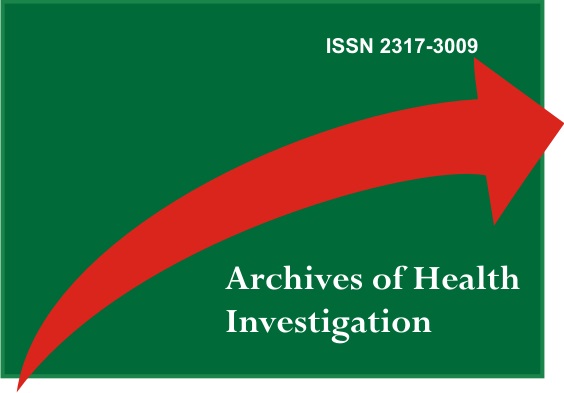Maxillary sinus survey followed with immediate cone morse implant installation: case report
DOI:
https://doi.org/10.21270/archi.v10i5.5212Keywords:
Sinus Floor Augmentation, Maxillary Sinus, Oral Surgical ProceduresAbstract
Maxillary sinus lift surgery aims to correct bone insufficiency in the posterior region of the maxilla and enable the installation of implants in cases of tooth loss that generate major bone resorption and pneumatization of the maxillary sinus. The present study aims to report a case of maxillary sinus lift followed by immediate installation of a cone-morse type implant, demonstrating the efficiency of the surgical technique through the side window and the efficiency of the implant in its installation concomitant to elevation of the sinus. The lifting of the maxillary sinus is performed frequently, but there are contraindications for this procedure for patients with sinus pathology, excessive smokers, people with psychological problems that make long-term treatment impossible, among others. It was concluded that the maxillary sinus lift with the immediate installation of a conical implant is effective. To achieve good results, it is necessary to take into account some factors that are essential for the success of these procedures, they are: the amount of bone remaining, the primary stability of the implant at the time of installation, the maintenance of the integrity of the sinus membrane, the health of the anterior maxillary sinus and the type of implant connection.
Downloads
References
Lajnert V, Kovacevic Pavicic D, Pavlic A, Pokrajac-Bulian A, Spalj S. Smile Aesthetics Satisfaction Scale: development and validation of a new brief five-item measure of satisfaction with smile aesthetics in adults and the elderly. Int Dent J. 2018;68(3):162-70.
da Silva HF, Goulart DR, Sverzut AT, Olate S, de Moraes M. Comparison of two anorganic bovine bone in maxillary sinus lift: a split-mouth study with clinical, radiographical, and histomorphometrical analysis. Int J Implant Dent. 2020;6(1):17.
Galafassi DB, Gomes-Ferreira PHS, Okamoto R, Ferreira S, Momesso GAC, Faverani LP. Instalação de implante imediato à levantamento de seio maxilar com utilização de enxerto autógeno. Arch Health Invest. 2015;4(Spec Iss2):170.
Santos KR, Cardoso A, Machado NA, Pinheiro AR, Merly F. Sinus Lift Procedure With Simultaneous Implant Instalation in Patients With Reduced Subantral Space. Int J Sci Dentistry. 2016;22(46)
Trajano B A, Pimentel ACQ, Toda C, Vieira, JMR, Martins LDM. Implantes curtos em região posterior de maxila e mandíbula. BJIHS. 2020;2(3):84-94.
Rolim GF, Brito LGC, Silva AA, Saturnino MS, Goldfarb ECA, Sousa TP et al. Levantamento de seio maxilar traumático com o uso de matriz óssea bovina. Braz J Develop. 2020;6(7):53697-713.
Albuquerque AFM, Cardoso IML, Silva JSP, Germano AR, Dantas WRM, Gondim ALMF. Levantamento de Seio maxilar utilizando osso liofilizado associado a instalação imediata de implante do tipo cone morse: relato de caso. RFO UPF. 2014;19(1):129-34.
Lim EL, Ngeow WC, Lim D. The implications of different lateral wall thicknesses on surgical access to the maxillary sinus. Braz Oral Res. 2017;31:97.
Starch-Jensen T, Arne M, Becktor JP, Jensen SS. Maxillary sinus floor augmentation with synthetic bone substitutes compared with other grafting materials. Implant Dent. 2018;27(3):363-74.
Santos A, Amorim R, Dietirch L, Costa M, Gontijo J, Silva G. Principais biomateriais utilizados na técnica de levantamento de seio maxilar. ROC. 2020;4(1):42-55
La Monaca G, Iezzi G, Cristalli MP, Pranno N, Sfasciotti GL, Vozza I. Comparative Histological and Histomorphometric Results of Six Biomaterials Used in Two-Stage Maxillary Sinus Augmentation Model after 6-Month Healing. Biomed Res Int. 2018;2018:9430989.


